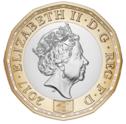**Currency Basics**
– Currency Name: Sterling
– Units of Account: Pound and penny
– Other Names: British pound, pound sterling
– Symbol: £
– Currency Code: GBP
– Exchange Rate Term: Cable
– Slang Terms: Quid, Nicker
**Historical Evolution**
– Origins: Old English ‘steorra’, German merchants
– Etymology: Pound from Latin ‘lībra pondō’
– Historical Value: 20 shillings = 240 silver pennies
– Evolution: From Carolingian system to modern circulation
– Notable Changes: Introduction of new coins, gold coins, and debasements
**Establishment and Modernization**
– Establishment: Bank of England (1694), Bank of Scotland (1695)
– Currency Unification: Great Britain (1707), United Kingdom (1801)
– Use in the Empire: Legal tender in colonies, tied currencies
– Gold Standard: Adoption in 1816, sovereign introduction
– World Wars Impact: Suspension, reinstatement, and devaluation
**Post-War Developments**
– Bretton Woods System: Pegged to USD, devaluations
– Free-Floating Pound: Breakdown of Bretton Woods, floating exchange rates
– 1976 Sterling Crisis: IMF loan conditions, budget deficit, economic challenges
– 1979–1989: Conservative Party policies, exchange rate fluctuations
– Following Other Currencies: Shadowing Deutsche Mark, ERM membership, Black Wednesday
**Recent Economic Trends**
– Interest Rate Policies: Impact on exchange rates and inflation
– Economic Performance: Export competitiveness, economic prosperity
– Challenges: Housing decline, recession, unsustainable exchange rates
– Economic Policies: Fiscal austerity, inflation control strategies
– International Relations: IMF negotiations, alliances for currency support
Sterling (ISO code: GBP) is the currency of the United Kingdom and nine of its associated territories. The pound (sign: £) is the main unit of sterling, and the word pound is also used to refer to the British currency generally, often qualified in international contexts as the British pound or the pound sterling.
| |||||
| ISO 4217 | |||||
|---|---|---|---|---|---|
| Code | GBP (numeric: 826) | ||||
| Subunit | 0.01 | ||||
| Unit | |||||
| Unit | pound | ||||
| Plural | pounds | ||||
| Symbol | £ | ||||
| Denominations | |||||
| Subunit | |||||
| 1⁄100 | penny | ||||
| Plural | |||||
| penny | pence | ||||
| Symbol | |||||
| penny | p | ||||
| Banknotes | |||||
| Freq. used | |||||
| Rarely used | |||||
| Coins | |||||
| Demographics | |||||
| Date of introduction | c. 800 | ||||
| User(s) | |||||
| Issuance | |||||
| Central bank | Bank of England | ||||
| Website | www | ||||
| Printer | De La Rue | ||||
| Mint | Royal Mint | ||||
| Website | www | ||||
| Valuation | |||||
| Inflation | 3.8% or 3.4% | ||||
| Source | Office for National Statistics, 20 March 2024 | ||||
| Method | CPIH or CPI | ||||
| Pegged by | see § Pegged currencies | ||||
Sterling is the world's oldest currency that is still in use and that has been in continuous use since its inception. In 2022, it was the fourth most-traded currency in the foreign exchange market, after the United States dollar, the euro, and the Japanese yen. Together with those three currencies and Renminbi, it forms the basket of currencies which calculate the value of IMF special drawing rights. As of late 2022, sterling is also the fourth most-held reserve currency in global reserves.
The Bank of England is the central bank for sterling, issuing its own banknotes, and regulating issuance of banknotes by private banks in Scotland and Northern Ireland. Sterling banknotes issued by other jurisdictions are not regulated by the Bank of England; their governments guarantee convertibility at par. Historically, sterling was also used to varying degrees by the colonies and territories of the British Empire.


